Remnants remain, but future of Las Vegas’ Moulin Rouge in limbo
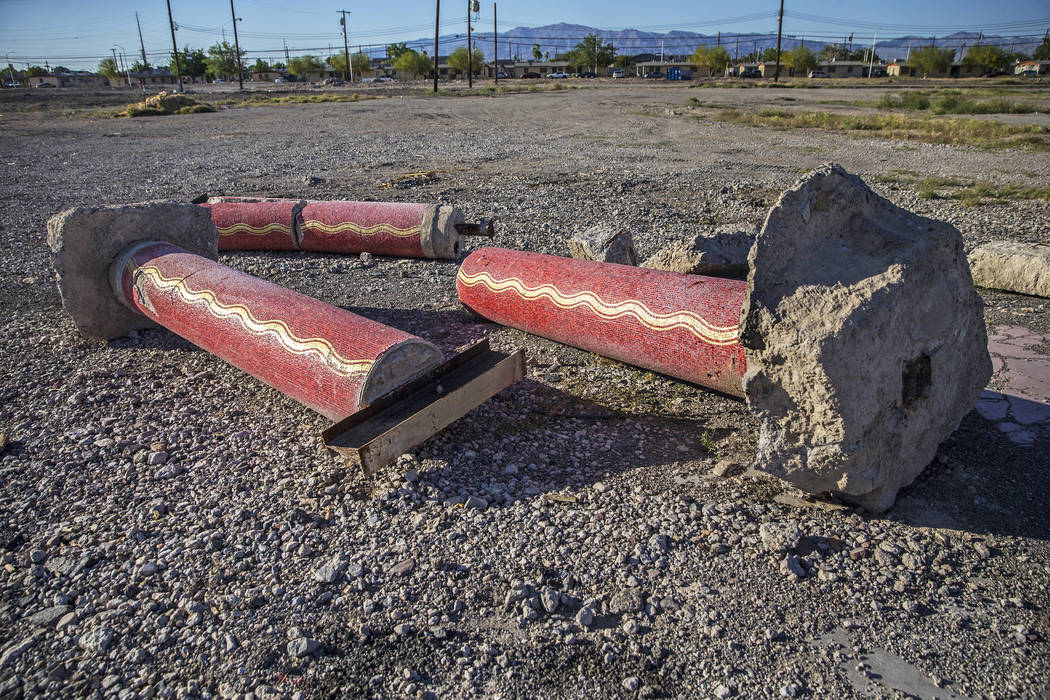
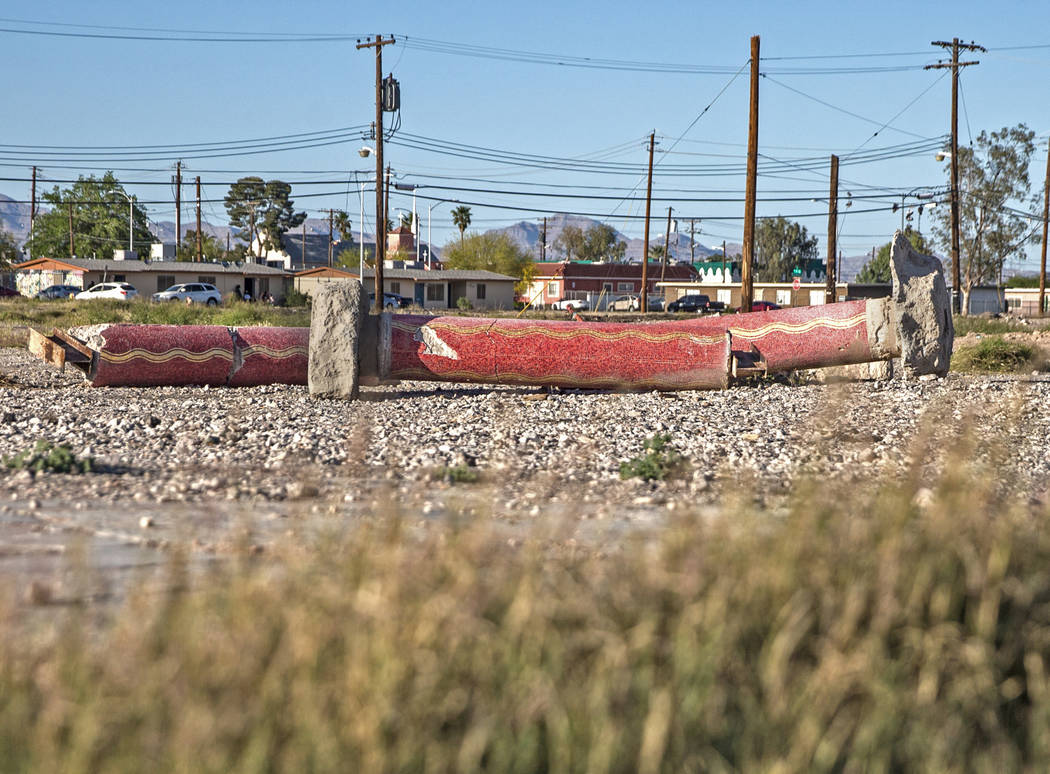
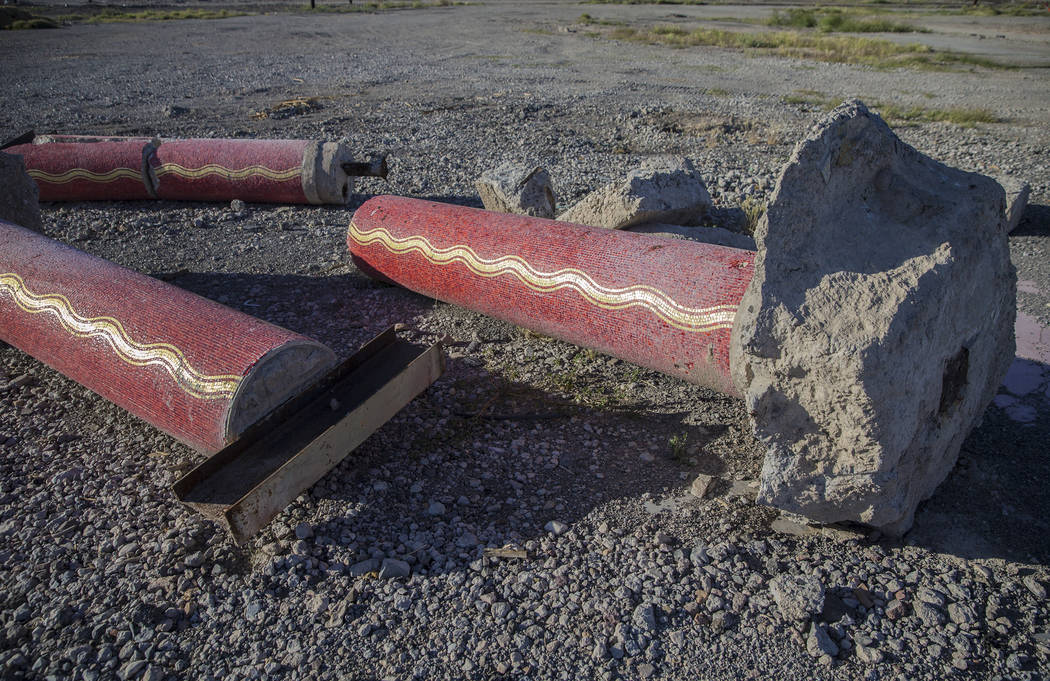
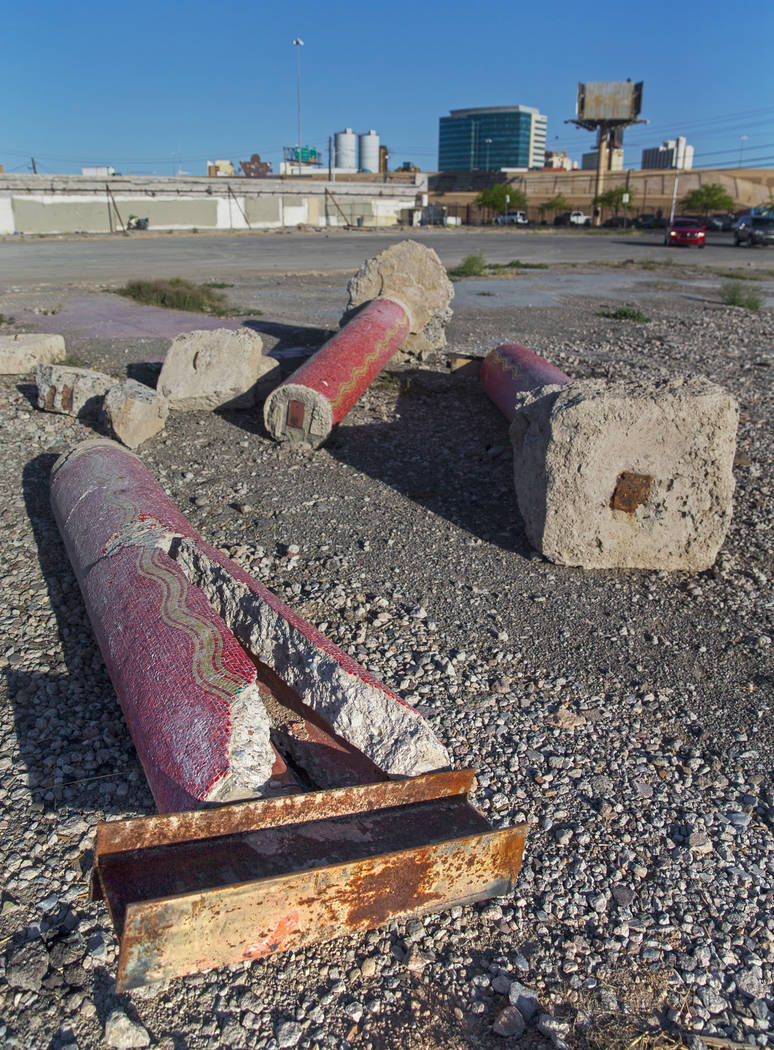
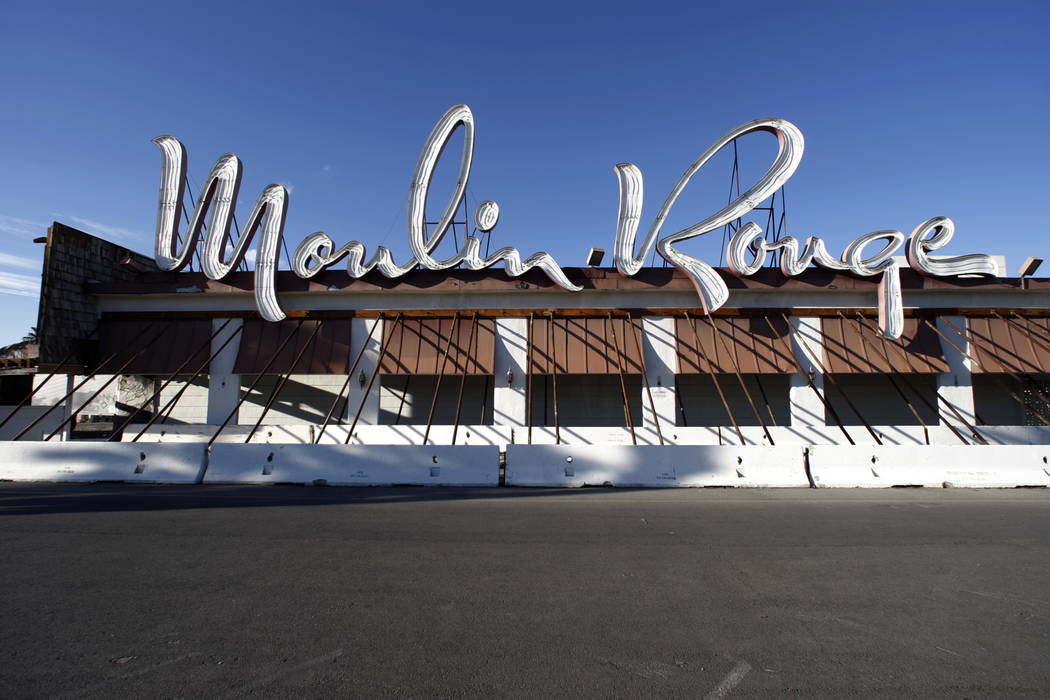
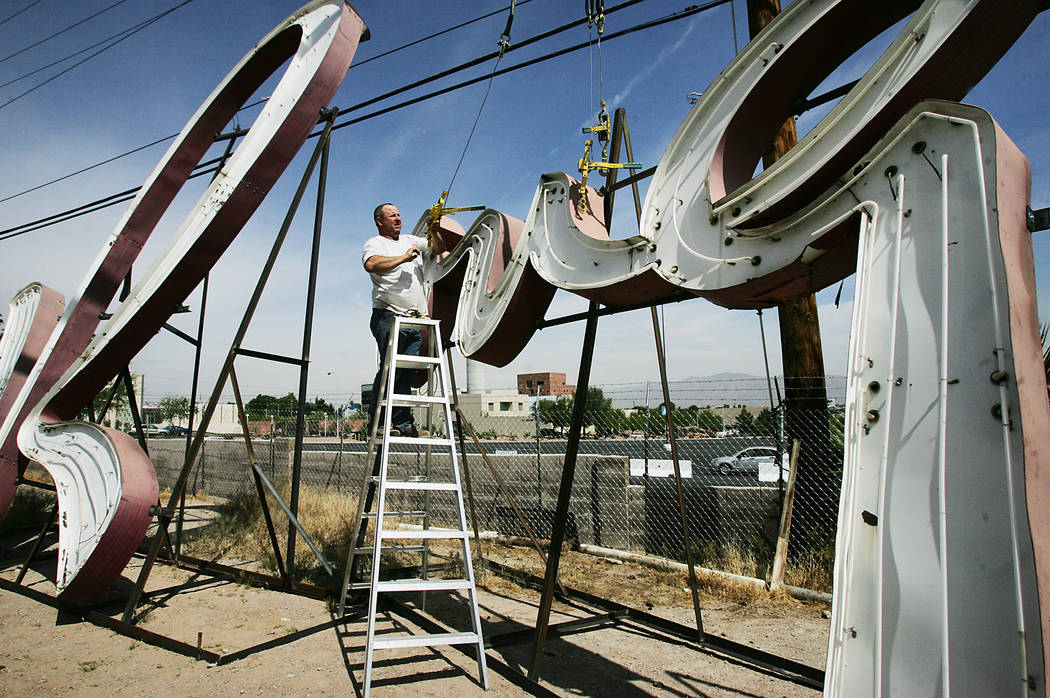
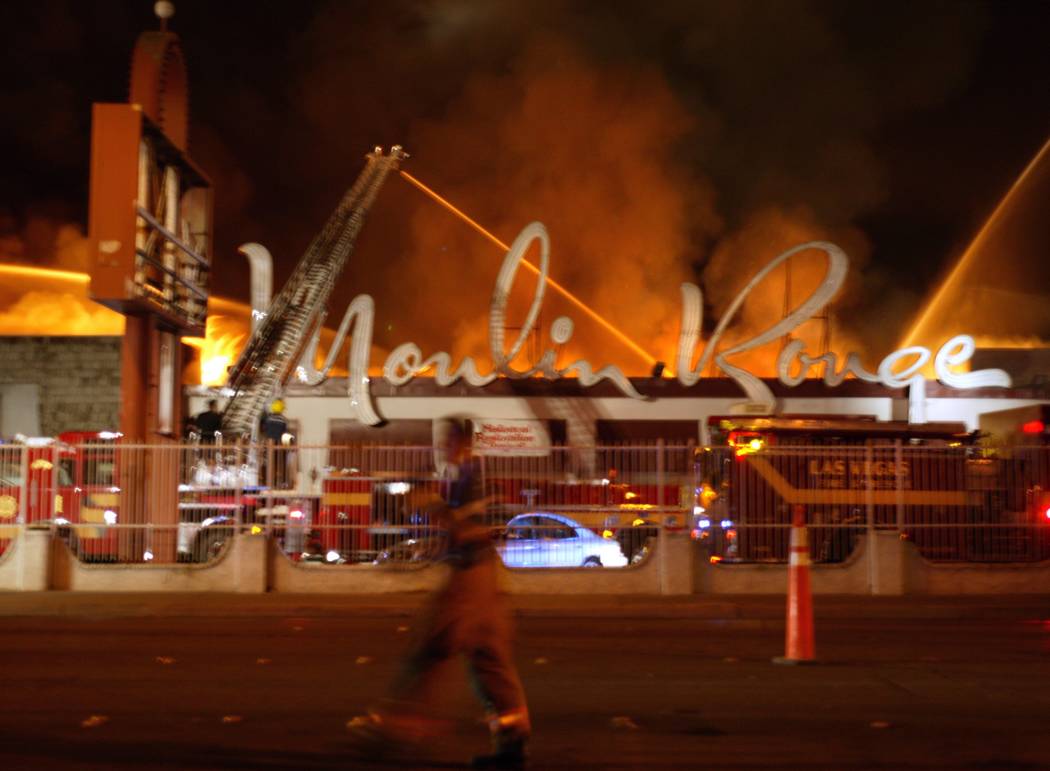
Three crimson columns are among the relics of the landmark that represents desegregation in Las Vegas casinos, but while the Moulin Rouge site’s future hangs in limbo, they lie haphazardly on a dirt lot.
In the decades since the Moulin Rouge’s short but storied run in 1955, multiple fires ravaged what remained of the historic hotel, leading the city of Las Vegas to declare the structures a hazard and raze them.
Signs, a portion of the original foundation and the three columns survived. They once stood tall, a serpentine gold line weaving through the red tiles and greeting visitors underneath a section of the building where lettering touted “casino, dining, theatre.”
Now they lie in a cluster on the same site, a dirt lot that doesn’t give passers-by much reason to think its past earned it a place on the National Register of Historic Places.
The reason the columns remain on the vacant site is to keep them protected, said Kevin Hanchett, the court-appointed receiver for the property.
“The idea is to preserve those so a redevelopment could incorporate them into the design,” Hanchett said. “That’s the whole purpose behind them being there.”
The former Moulin Rouge property has seen several failed redevelopment attempts over the years. Last year, Clark County bid $6.2 million for the 15-acre site but backed away in response to a community outcry from the Historic Westside over a plan to repurpose the property as an administrative building.
Historic past
After it closed, the Moulin Rouge in 1960 hosted the meeting that effectively ended segregation in Las Vegas casinos.
The city’s historic preservation commission issued a certificate of appropriateness last year allowing demolition of the remaining structures on the site as long as the remaining original Moulin Rouge foundation, columns and signage were preserved.
That certificate requires the historic elements to remain on the site; removing them would require another certificate.
Beyond that, they’re “the private property of the landowner and cannot be removed without landowner consent,” Las Vegas city spokesman Jace Radke said.
“At such time that a new owner is identified, the Historic Preservation Commission will work with that owner to preserve the history of the site, which may include reuse of the historic elements on site,” Radke said.
The Moulin Rouge remains in the National Register of Historic Places database, but the register lists one building contributing to the site’s historical integrity and doesn’t list any contributing structures, objects or sites.
According to the 1992 registration form, when the property was put on the National Register, the “one and two-story complex survives in good condition.” The document also noted that at that time, the appearance of the exterior of the building remained “close to the original appearance of the building.”
A Las Vegas city staff summary for a Historic Preservation Commission meeting last year notes that “by retaining some physical elements of the site,” including the mosaic columns, “there continues to be a validity to retaining those designations.”
The city tore down some structures at the site in 2010, including the original tower. A historian for the National Park Service said at the time that demolition could threaten the Moulin Rouge’s listing on the National Register. Officials from the National Register of Historic Places did not return calls for comment this week.
After Clark County pulled its bid to buy the property, the receiver entered into a new purchase agreement for $6.2 million with Spec Builders USA Inc.
Ashraf Rajpoot is listed as the company’s agent in a filing with the California Secretary of State’s Office, which says the La Palma company was incorporated in April 2017. Reached by phone Thursday, he told a reporter he was still trying to “iron out some critical things” related to the property and asked the reporter to call back in a week.
In 2009, the Neon Museum acquired the original Moulin Rouge sign, which features prominently in the Neon Boneyard exhibit.
Betty Willis designed the Moulin Rouge sign and the Welcome to Fabulous Las Vegas sign that greets visitors at the south end of the Strip. More than 200,000 museum visitors are expected to view the sign this year.
During boneyard tours, “we tell the sign’s unique story, including the pivotal role the Moulin Rouge played in the civil rights movement in Las Vegas in the 1960s,” Director of Education and Engagement Cynthia Warso said.
Contact Jamie Munks at jmunks@reviewjournal.com or 702-383-0340. Follow @Journo_Jamie_ on Twitter.
Related
Ownership of the historic Las Vegas property remains in flux
Next owner of Moulin Rouge site may have to mark its history
Clark County decides not to buy Moulin Rouge site
Las Vegas residents fight county’s plan for Moulin Rouge site













